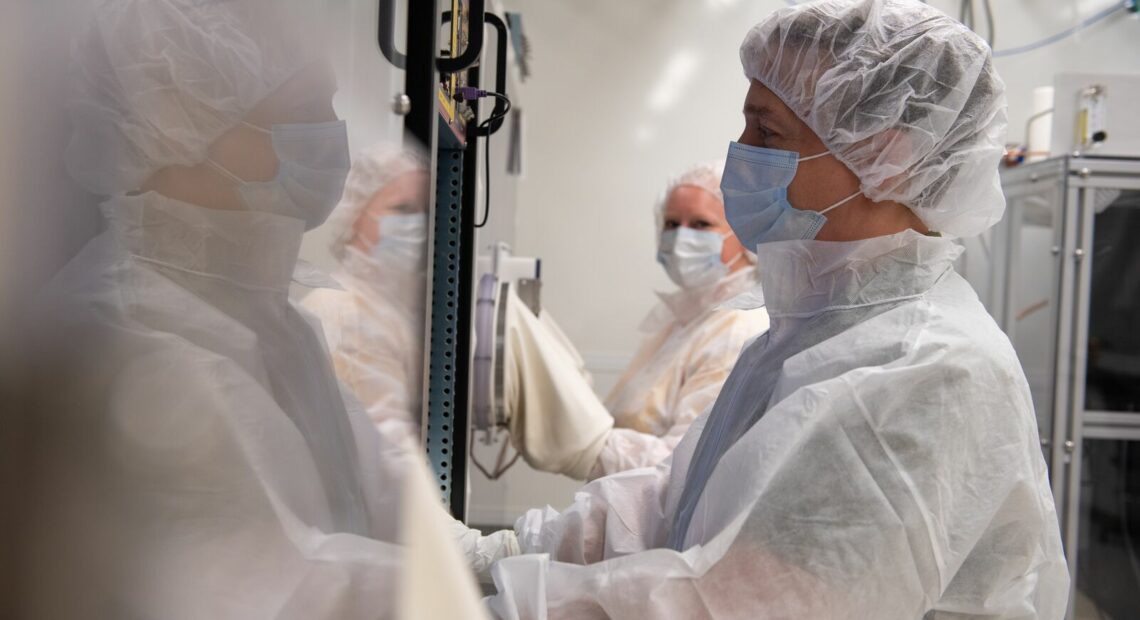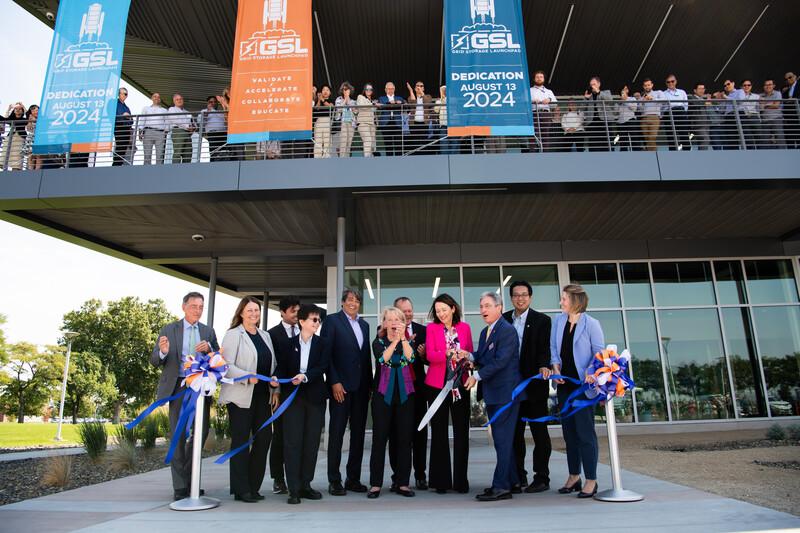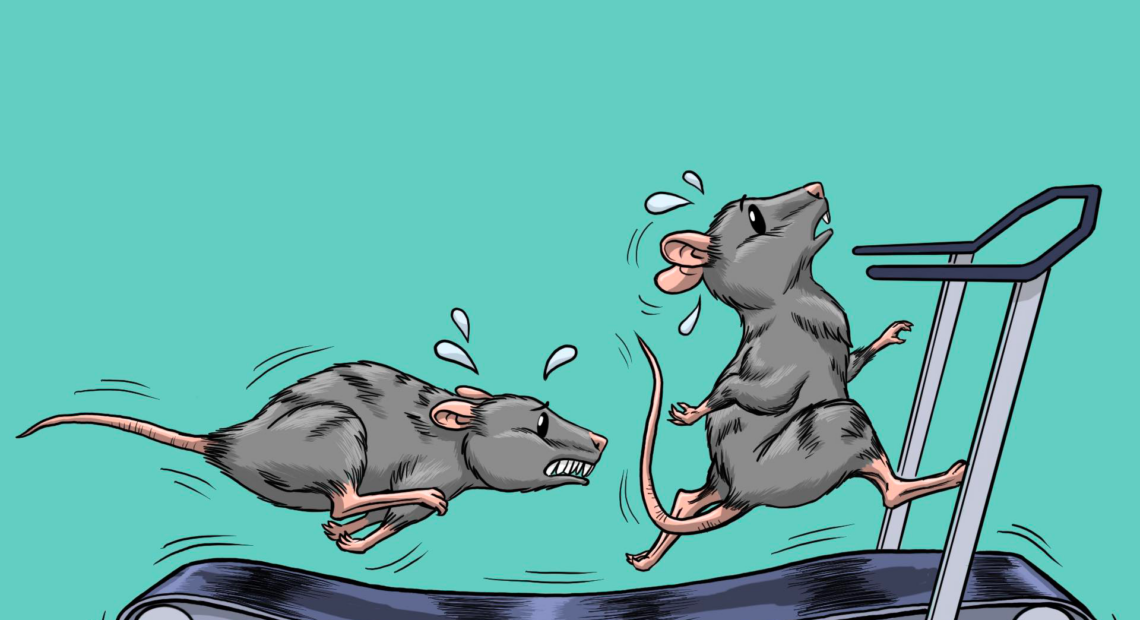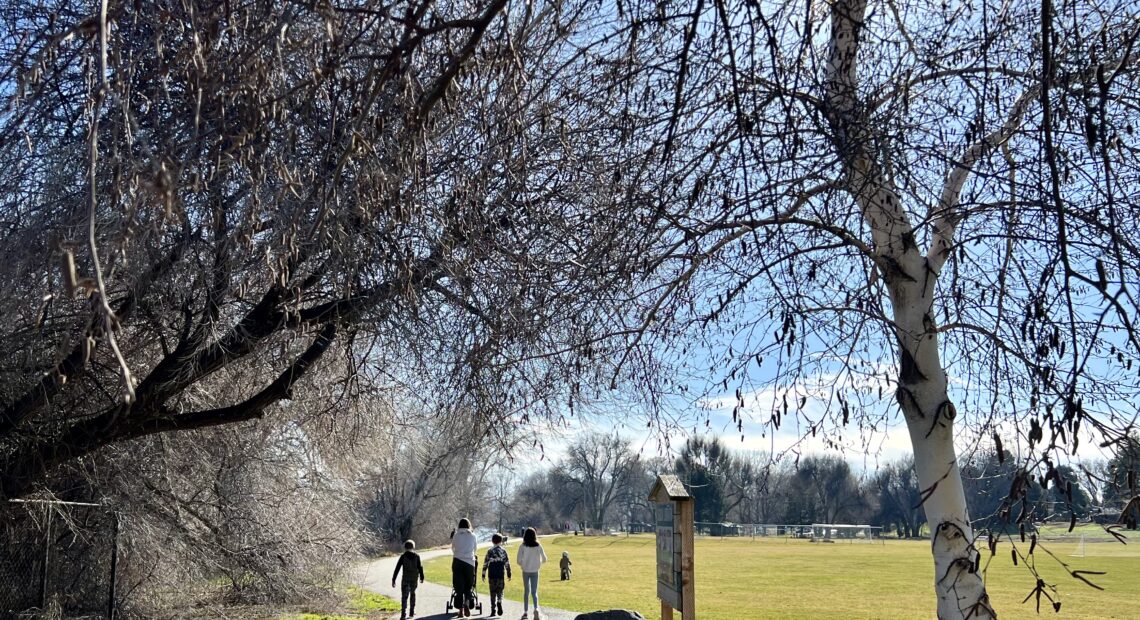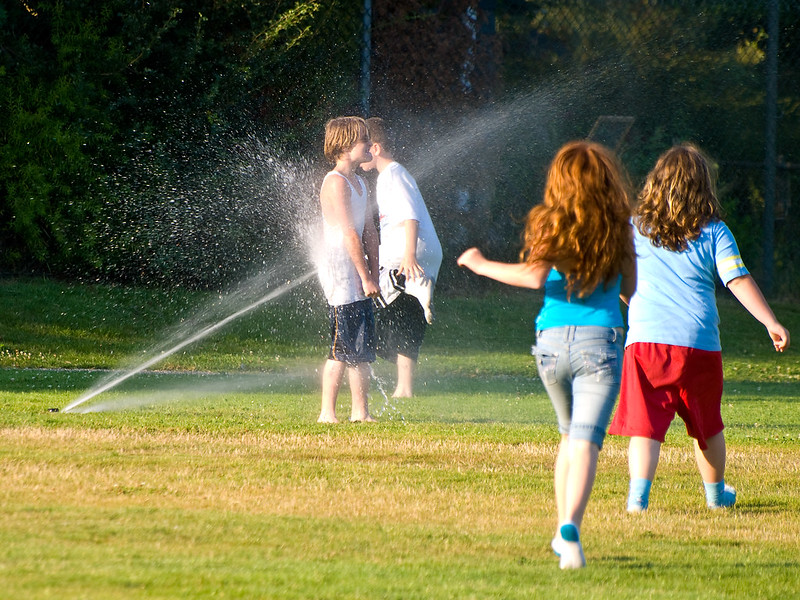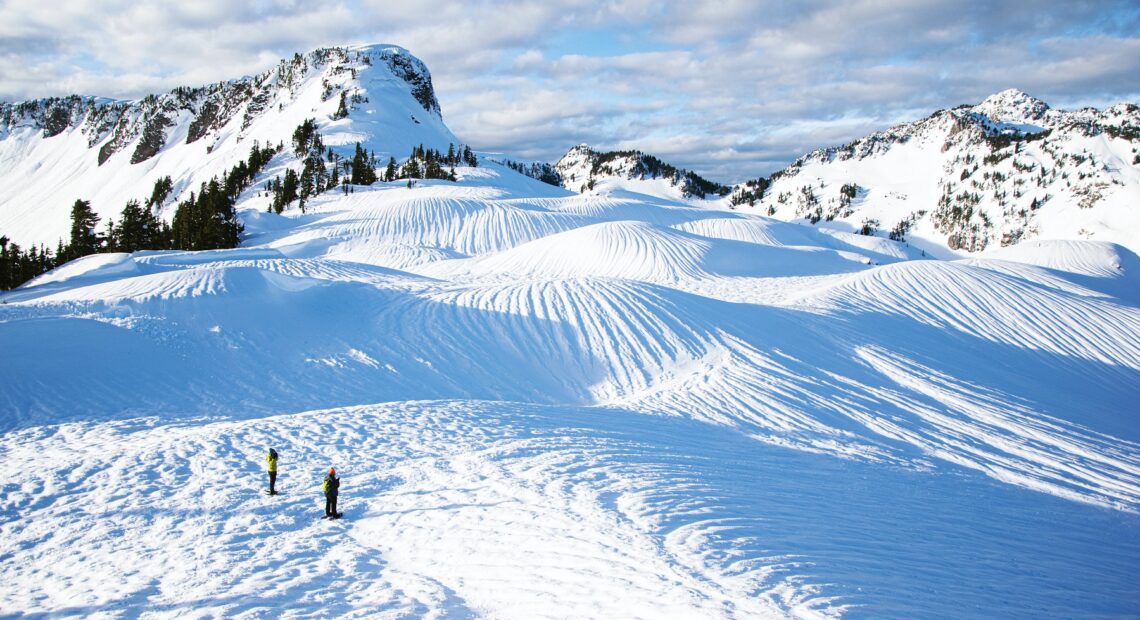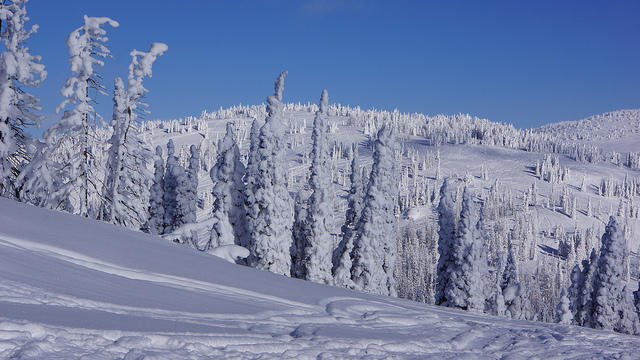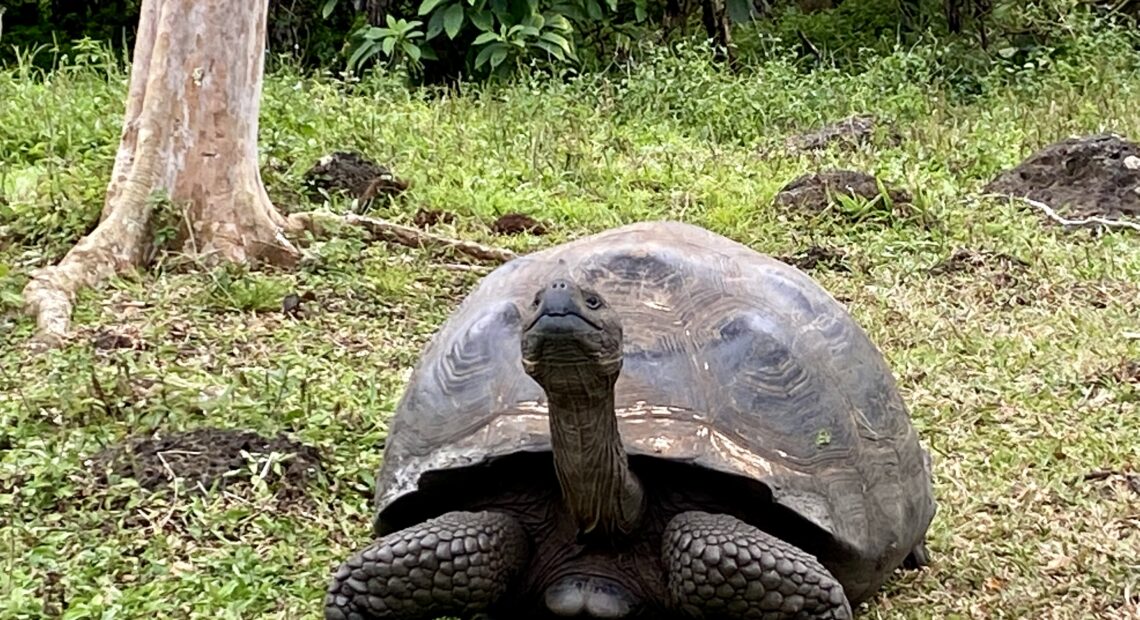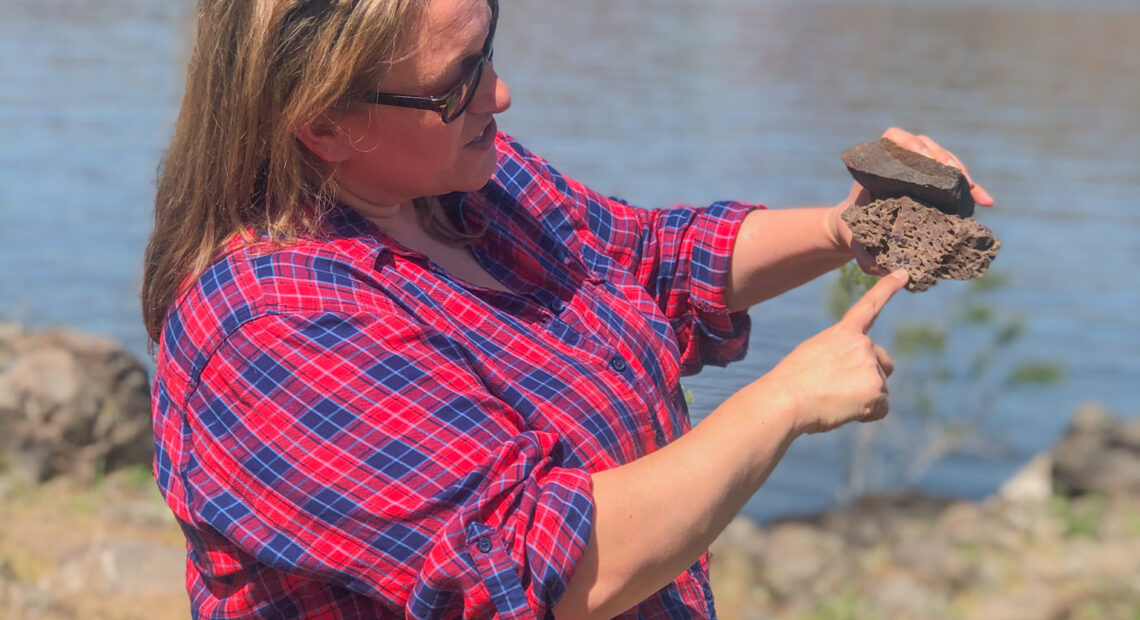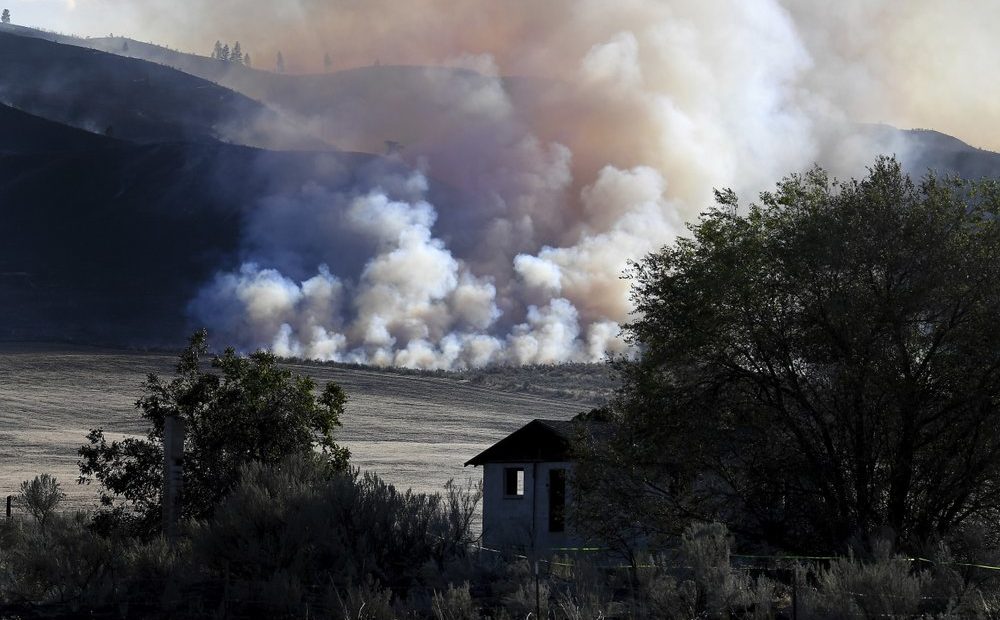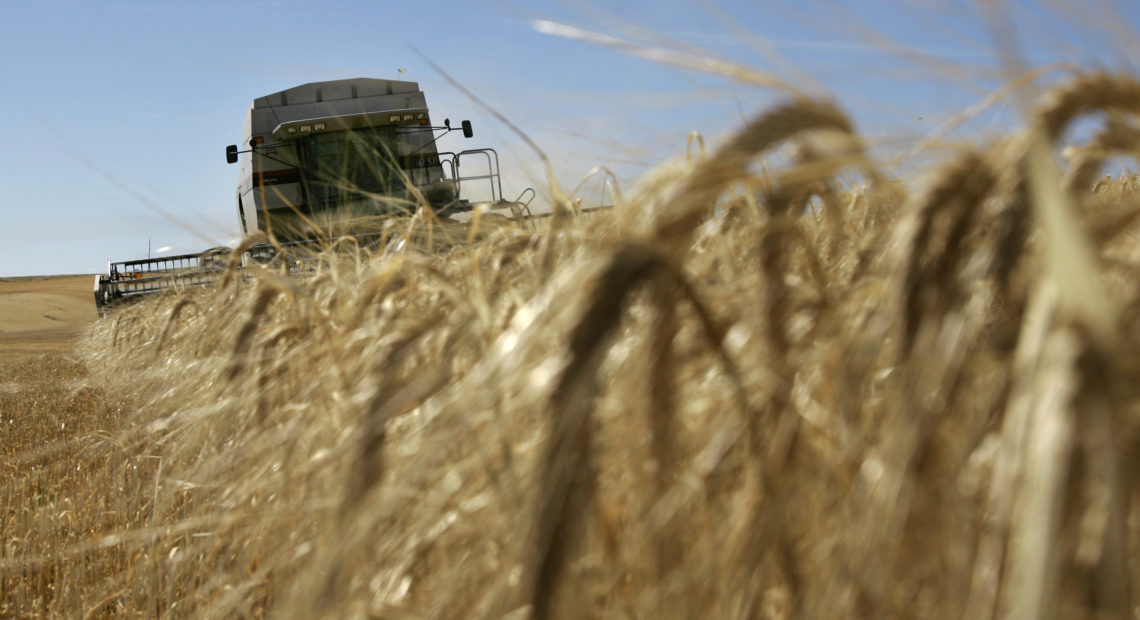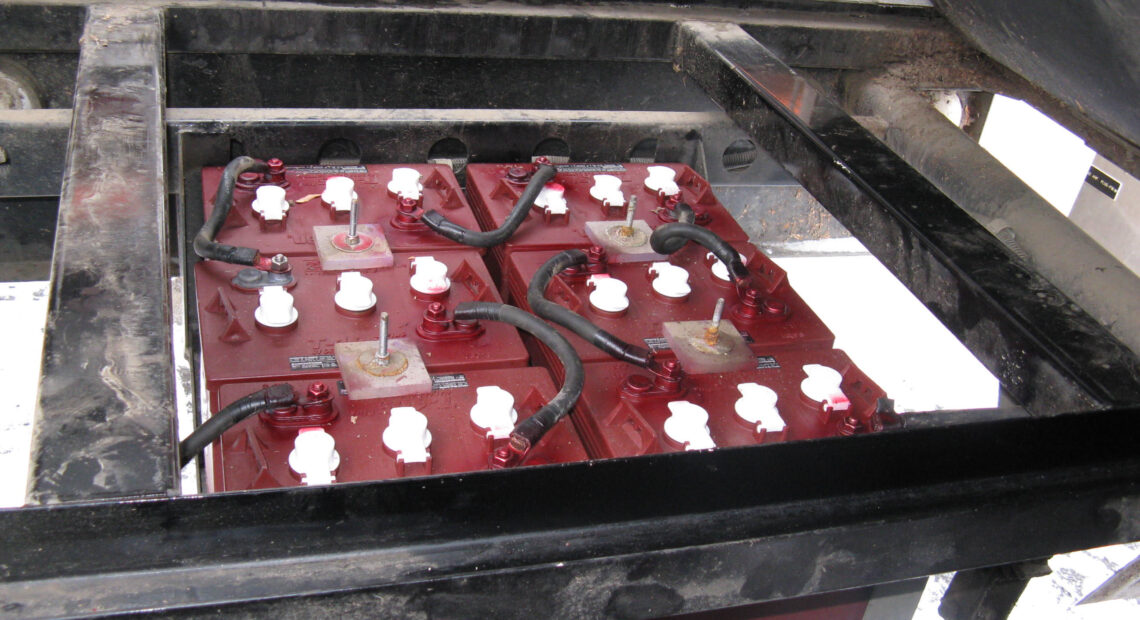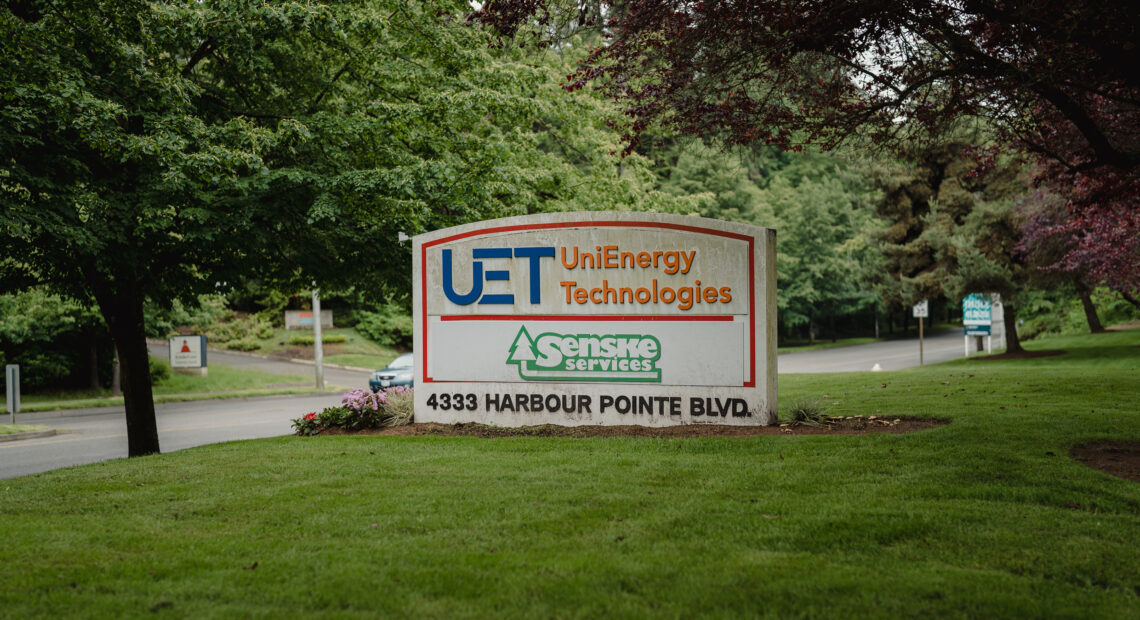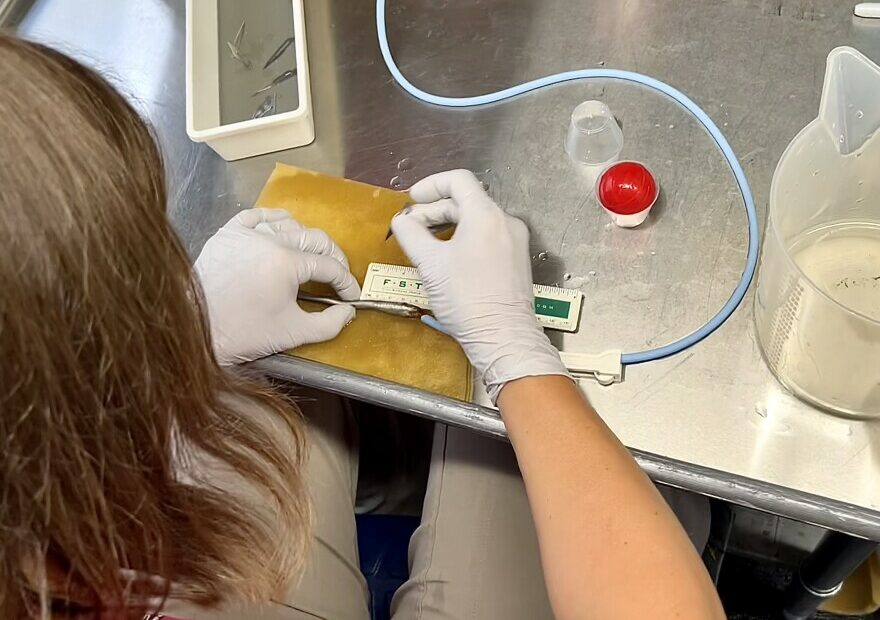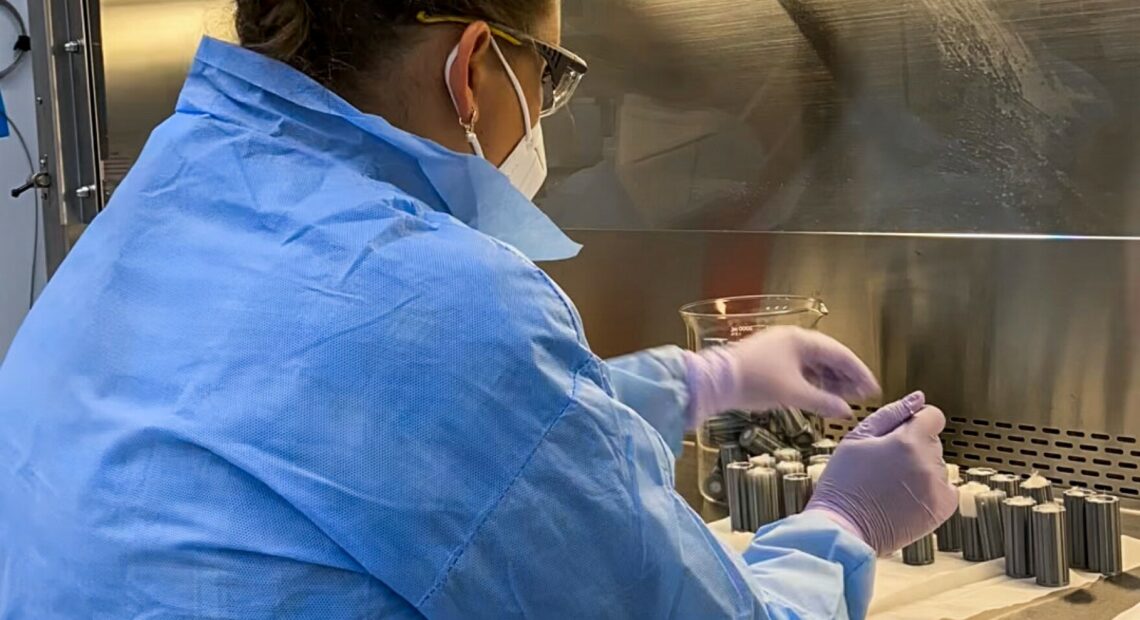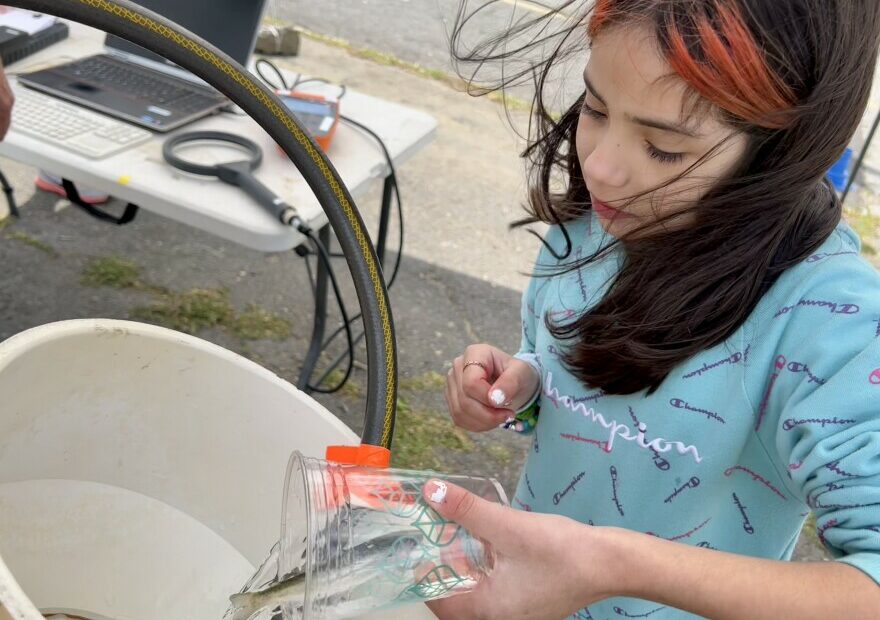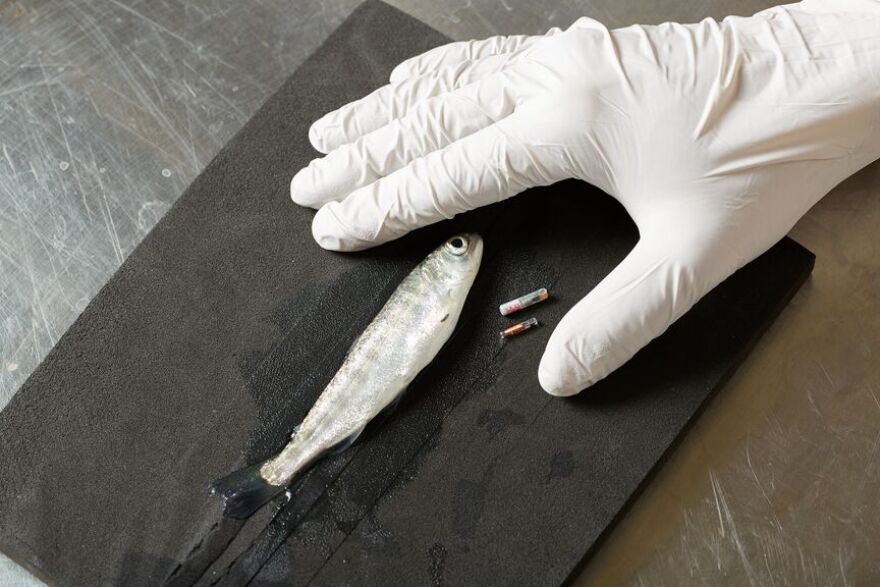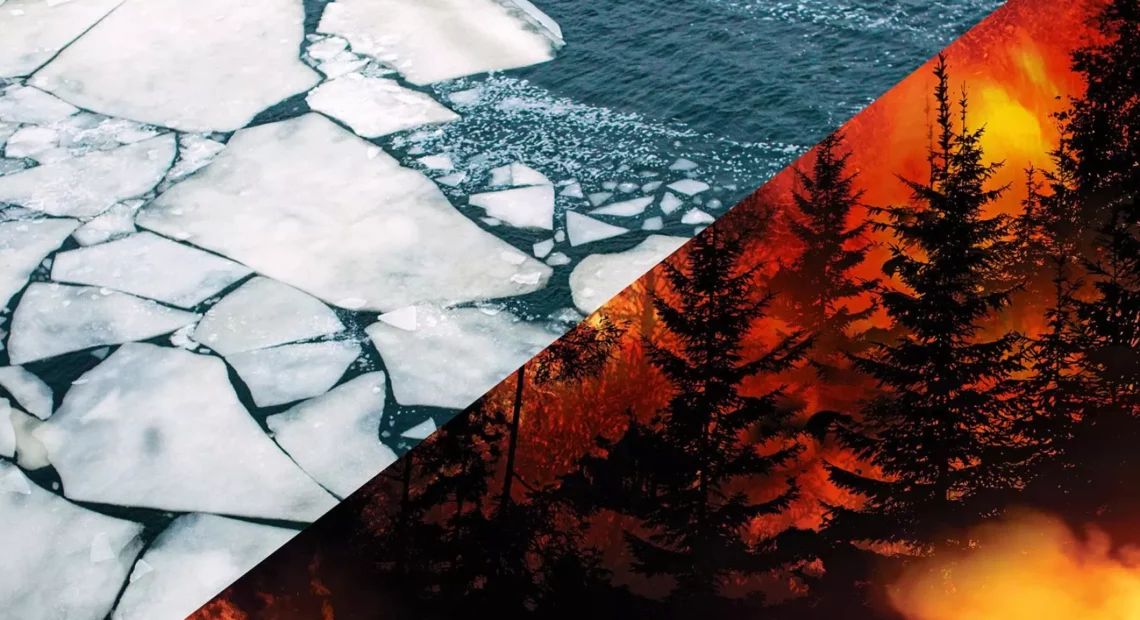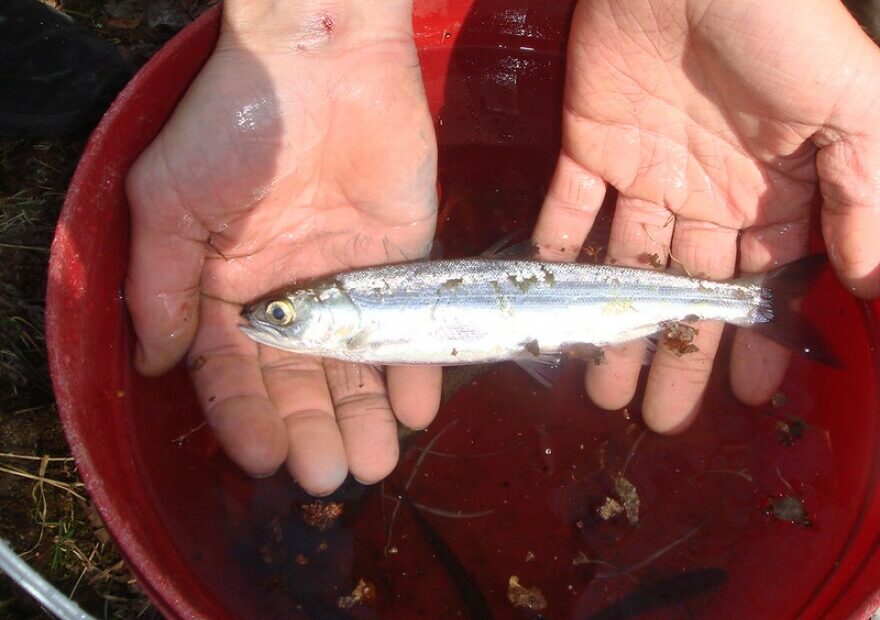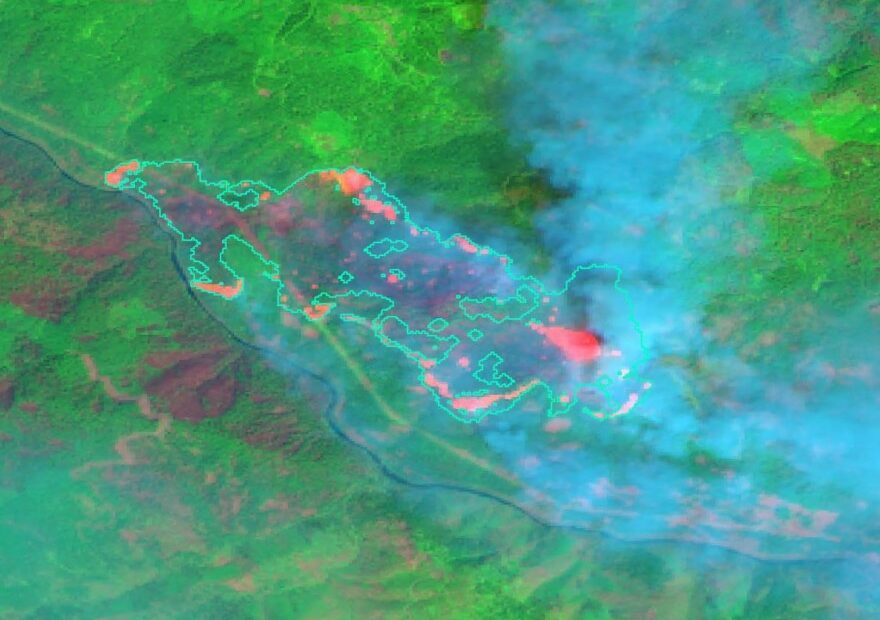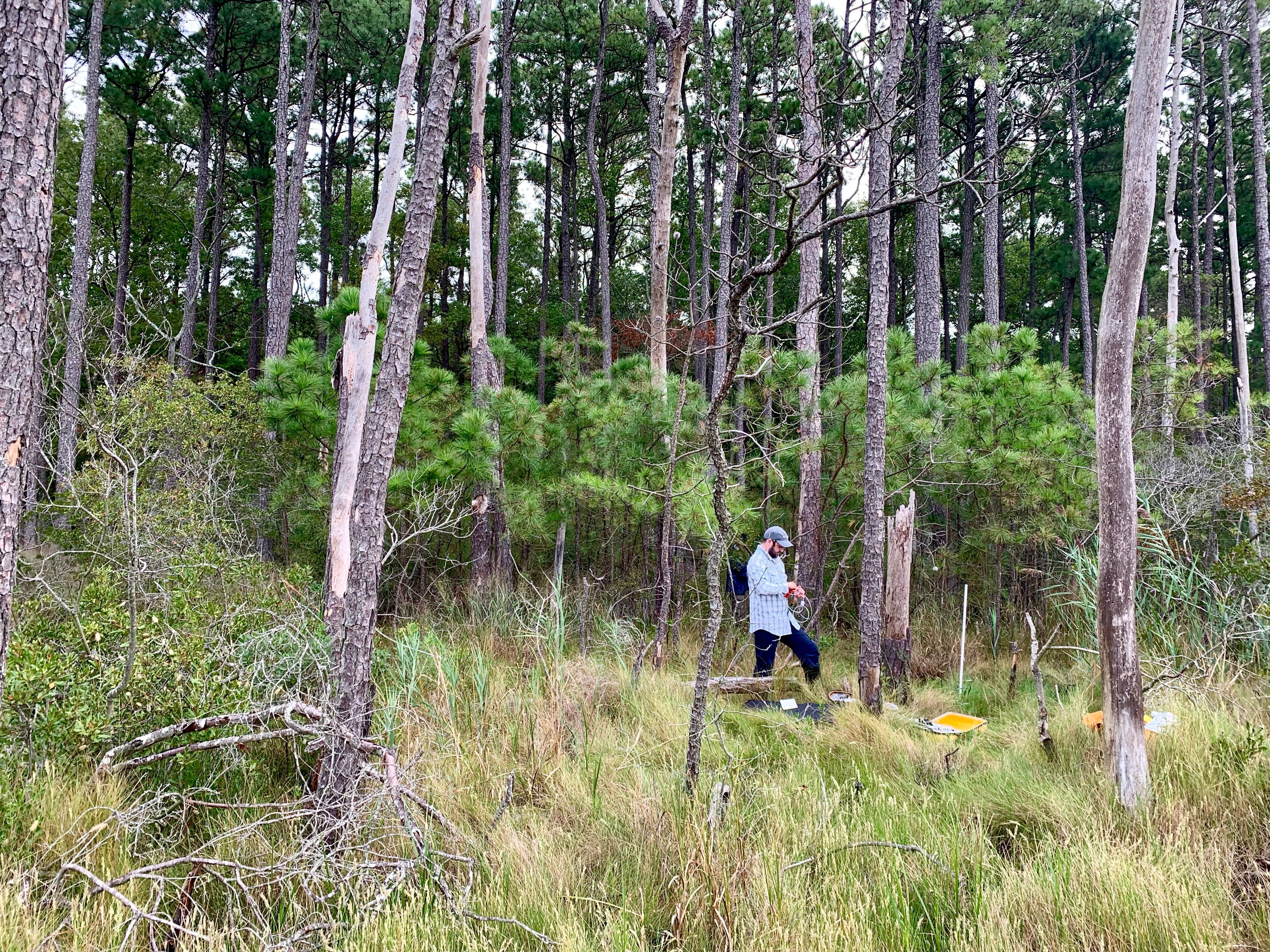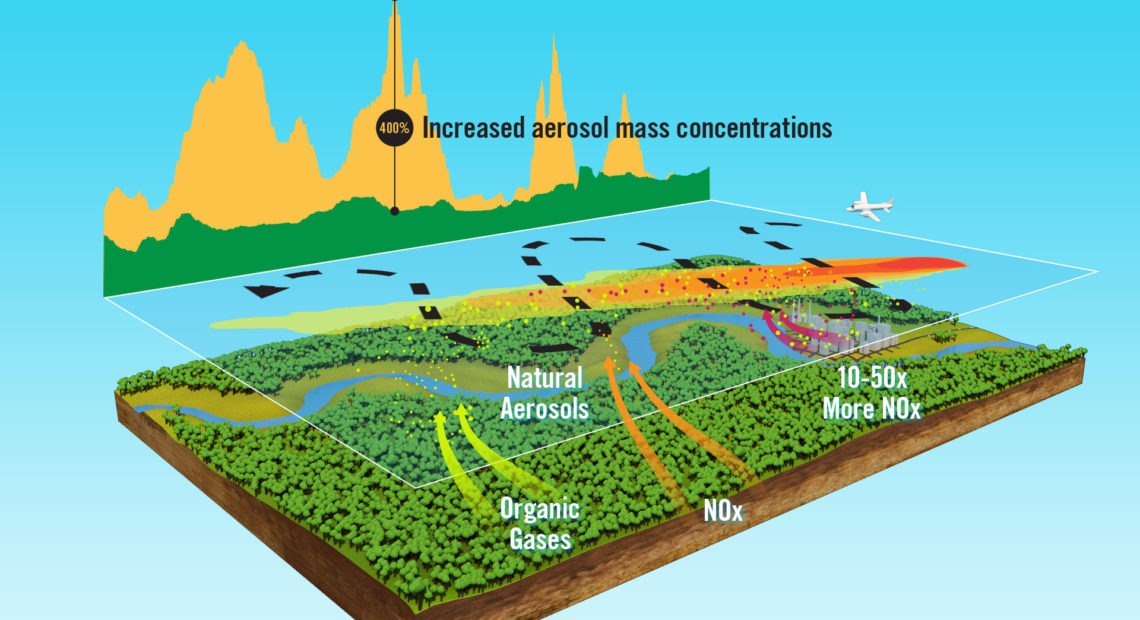The Shallow Underground Laboratory at Pacific Northwest National Laboratory in Richland, Washington, gives its scientists powerful abilities to detect sensitive signatures of radiation. (Credit: Andrea Starr / Pacific Northwest National […]Read More
State and federal leaders cut the ribbon to open the Grid Storage Launchpad at Pacific Northwest National Laboratory. (Credit: Pacific Northwest National Laboratory) Listen (Runtime 1:02) Read Scientists hope there’s […]Read More
An illustration of rats on a treadmill. (Illustration by Rocio del Pilar Benavides / NWPB) Listen (Runtime 1:03) Read If you’ve ever tried to lose any body fat, you may […]Read More
People walk along a trail at Leslie Groves Park in Richland, Wash. (Credit: Courtney Flatt / Northwest News Network) Listen (Runtime 1:02) Read A new study has found – when it […]Read More
The second day of record-breaking heat in the Seattle area. People of all ages took advantage of the sprinklers during a free concert at the Lake Burien School Park. (Credit: […]Read More
Científicos del Noroeste han descubierto que reducir la contaminación por los gases de efecto invernadero podría ensuciar menos la nieve. Eso significa que permanecería más tiempo en las montañas, según un estudio publicado en Nature Communications.Read More
File photo of snowy Idaho mountains. (Credit: Motowebmistress, Flickr Creative Commons) Listen (Runtime 1:03) Read For mountain snowpack to melt slowly, not all of the white fluffy stuff is created […]Read More
A giant tortoise on Santa Cruz Island in the Galapagos. (Courtesy of Courtney Flatt.) Listen (Runtime 1:13) Read Northwest researchers have discovered that turtle shells can help track radioactive material […]Read More
Casie Davidson, a scientist at Pacific Northwest National Laboratory, points out how basalt rocks are layered on top of each other. The rocks formed millions of years ago after volcanic […]Read More
Late afternoon light catches smoke from the Cold Springs Fire near a structure that appeared to be empty long before the fire, Monday, Sept. 7, 2020, near Omak, Washington. CREDIT: […]Read More
A combine harvests barley Friday, Aug. 24, 2007, near Moscow, Idaho. Credit: Ted S. Warren/AP READ When you think of heat-trapping greenhouse gas emissions, you might picture industrial smoke stacks […]Read More
Listen (EV Battery Fires Runtime: 1:09) (EV Battery Recycling Runtime: 1:48) READ As more electric vehicles hit the roads in Washington, some people are concerned about their batteries catching fire […]Read More
BY LAURA SULLIVAN and COURTNEY FLATT When a group of engineers and researchers gathered in a warehouse in Mukilteo, Wash., 10 years ago, they knew they were onto something big. […]Read More
Scientists at Pacific Northwest National Laboratory are tagging and releasing lamprey to learn more about their journey to sea from inland rivers.Read More
How do you grow plants in space? Soil from the Lower Yakima Valley could help provide some key answers.Read More
A recent salmon field trip has helped students become more curious about salmon.Read More
Researchers at PNNL tag young chinook salmon with tags slightly larger than a grain of rice Listen: Northwest News Network’s Courtney Flatt reports on data released that tracks fish and […]Read More
Recent atmospheric research may help Northwest forest managers better prepare for wildfires.Read More
Soon, it could be easier to track young sockeye salmon around dams.Read More
Scientists have discovered they can track fire lines and can quickly draw attention to spot fires using satellites.Read More
Trees have a little secret you might not know about. Yes, they produce oxygen. Yes, they take in carbon dioxide, a heat-trapping greenhouse gas. But, they also emit methane. Methane is a greenhouse gas that can be significantly more potent than carbon dioxide.Read More
As a U.S. Department of Energy plane flew over the Amazon rainforest, it sipped and sampled air in real time. Pacific Northwest National Laboratory scientist Manish Shrivastava sampled the air over the Amazon to come up with a scientifically accurate baseline of pre-industrial air. Read More

